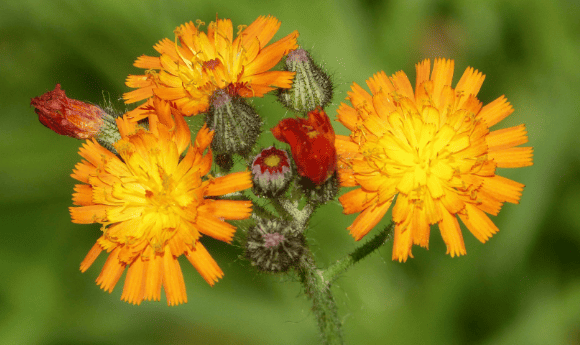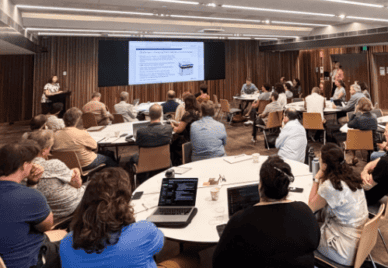
Biosecurity Commons is a ground-breaking platform that will change how we analyse and respond to biosecurity threats such as plant pests, weeds or diseases arriving with air and sea cargo, passengers or mailed parcels.
The platform can provide information about where to look for a disease or pest, where it might spread, what impacts it might cause, how long it will take to eradicate, and when a region is free from it.
Previously, finding answers to these questions would have required significant work. However, Biosecurity Commons is set to change this by bringing together vast quantities of invasive species data and a suite of sophisticated analytical tools into one platform that only requires a web browser to run.
The Biosecurity Commons team has already demonstrated that the platform can easily and much more quickly reproduce the results of a scientific paper which predicted the spread of orange hawkweed (Hieracium aurantiacum), an invasive species of daisy that could seriously degrade Australia’s alpine ecosystems.
Biosecurity Commons simplifies the investigation of specific biosecurity questions like this, which will lead to better biosecurity outcomes.
There is also a vision for the platform to expand its scope into the plant and agriculture sector and potentially the animal and livestock sector.
Biosecurity Commons launched at the Annual Diagnostics and Surveillance Workshop (ADSW) 2023, facilitated by Plant Health Australia, on 10 May in Canberra.

A Partnership for Australia’s Biosecurity
It is a $1.8m joint initiative between the Australian and Queensland governments, the NCRIS supported Australian Research Data Commons (ARDC) and 4 other partners – CEBRA at The University of Melbourne, Griffith University, EcoCommons Australia and the Atlas of Living Australia.
Dr Rob Clemens, Project Manager at Biosecurity Commons, said: “Biosecurity Commons has the potential to transform the sector and help protect Australia’s unique environment and its economy. The platform will solve environmental biosecurity issues and, crucially, build a bridge between science and professionals that was not there before.”
At the moment there is limited access to analytical tools and expertise in the biosecurity community and issues are often tackled in isolation with little collaboration or sharing between practitioners.
For the first time, the platform will enable users from different organisations, sectors and jurisdictions to share project work and collaborate to improve modelling results that inform decisions.
Growing the number of biosecurity projects available on the platform could produce a game-changing move toward technology-driven adaptive learning in the sector.
This will radically cut the amount of time usually required to investigate biosecurity questions which will accelerate targeted actions.
Rosie Hicks, CEO of the ARDC, Biosecurity Commons’ major partner, said: “The ARDC is thrilled to see the launch of the world’s first virtual lab for biosecurity research and decision-making. At a time of pressing biosecurity challenges, this impressive national research infrastructure gives researchers and governments the tools to conduct fast, data-driven research and make decisions that will protect Australia’s biodiversity, agricultural industry and health.”
Enrico Perotti, General Manager, Invasive Plant and Animals at Biosecurity Queensland, said: “The Biosecurity Commons tool is a big step forward to inform decisions on feasibility of eradicating specific pests and prioritisation of surveillance efforts. It presents the potential to improve the quality of our risk assessments including the likelihood of establishment and impact of invasive species.”
Dr Bertie Hennecke, the Australian Chief Environmental Biosecurity Officer from the Department of Agriculture, Fisheries and Forestry, said: “Biosecurity Commons is well placed to shape the way Australia models biosecurity scenarios and incursions. It will offer a comprehensive suite of functions crucial for preparing and responding to biosecurity incidents in a highly accessible format.”
Biosecurity Commons is free to use. For more information, visit Biosecurity Commons.
The ARDC is funded through the National Collaborative Research Infrastructure Strategy (NCRIS) to support national digital research infrastructure for Australian researchers.
Categories
Research Topic
Related Program
Related Projects
Related News & Events
Related Case Studies







